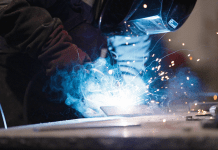Addressing the thermal bypass and bridge dilemma can be difficult, especially when dealing with the bridging aspect. John Tebbit, Managing Director, Robust Details Ltd examines the challenges posed and the need for third party accreditation.
Bridges and bypasses are well known to all road users. Indeed they are generally regarded as good things as they get us over obstacles, speed up our journeys and save the inhabitants of the bypassed communities the noise and fumes from road traffic. However, as is often the case, when we move into the area of building physics and in particular thermal issues, what is seen as good in other areas is definitely bad for thermal performance. Rather than speeding up the traffic, we speed up the flow of heat, generally from our warm homes to the colder outside. That means higher fuel use, fuel bills and carbon emissions. It also increases the chances of condensation and mould. All in all, thermal bypasses and bridges are things we want to avoid. Fortunately we do have quite a bit of knowledge and guidance in this area.
Taking the issue of bypasses first, these can be avoided by good design and so then do not have to be considered. These are where warm air can circulate in some way into a colder area and thereby transfer energy. The best known of these is the party wall bypass where air in the cavity sets up circulation taking heat from the warm rooms either side, and moving it to the colder loft where energy is transferred.
The answer has been to stop the circulation and this is typically done by filling the cavity with insulation along with effective edge sealing of the party wall cavity as illustrated above. We have full filled party wall details that have also been tested to prove that filling the cavity did not compromise sound insulation.
Thermal bridging is more problematic in that even with good design the bridge often remains, even if it is no longer a four lane motorway for heat, but a slow single lane track. Also rather like real bridge design, the calculations to assess the size of the bridge are not easy. It is not something that can be done with a pencil and paper or even a spreadsheet. Typically one needs to use finite element analysis software. To make life even worse, there is not even a rigorous, unambiguous set of assumptions, simplifications and rules on how to use the software. There is guidance such as the BRE paper BR497 but even that has considerable room for judgment.
There is also the issue of whether the design that is intended to minimise bridging is buildable in real life. Details that look good in two dimensional sections may turn out to be impossible to build in three dimensions, or at corners without resorting to hyper dimensional black belt origami with membranes. Anything that requires absolute precision or dry, dust and grease free working conditions is unlikely to be reliably reproduced on a building site.
For these reasons Robust Details and BBA set up a joint venture – Constructive Details (http://www.constructivedetails.co.uk/) to develop and disseminate junctions that were high performance, robust and buildable. A number of companies and trade associations have worked with Constructive Details to deliver a range of junctions all of which are free to download.
There are other places to find junctions including many manufacturers, BRE and government. However, not all will be up-to-date or assessed to the same level of scrutiny. For those who are less worried about how realistic the construction is either in its theoretical performance or for its onsite buildability, there are no real barriers to so doing. Indeed, for the house builder looking for ways to improve the performance of the dwelling it is difficult to be confident about the rigour of assessment that any particular detail has been through, as there is currently no requirement for third party accreditation or even assessment of competence for the modellers.
It is virtually impossible for a non-expert to look at a junction and its performance data and judge whether it is likely to be true. The chances of building control being able to police this area are almost non-existent. In terms of thermal bridging and the claimed performance of details, if it looks too good to be true, then it probably isn’t true. Therefore, until a third party accreditation system is introduced that all parties have to adhere to, this is very much an area of caveat emptor. ■
. . . . . . . . . . . . . . . . . . . . . . . . . . . . . . . . . . . . . . . . . . . . . . .
John Tebbit
Managing Director
Robust Details Ltd
Tel: 01908 904 189













